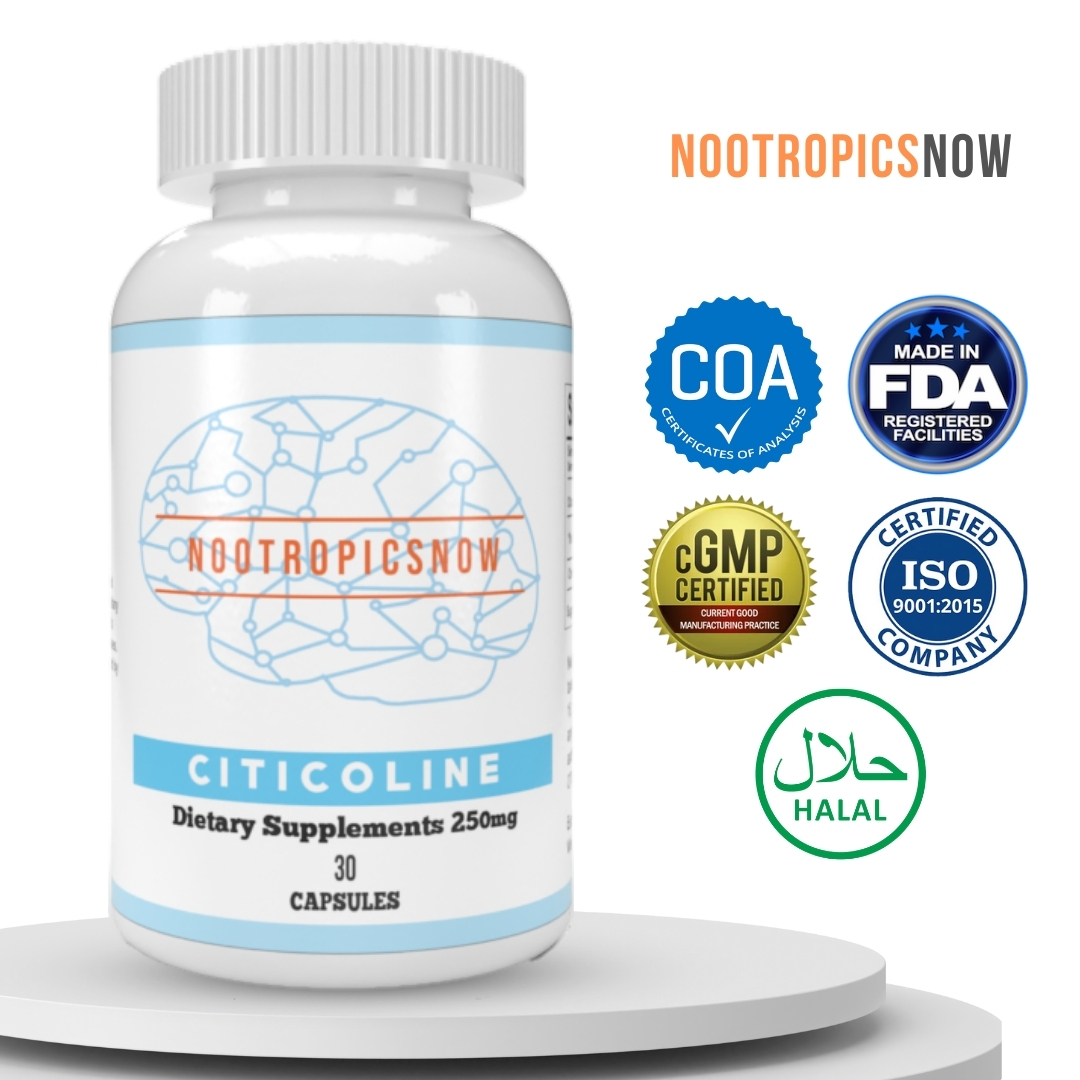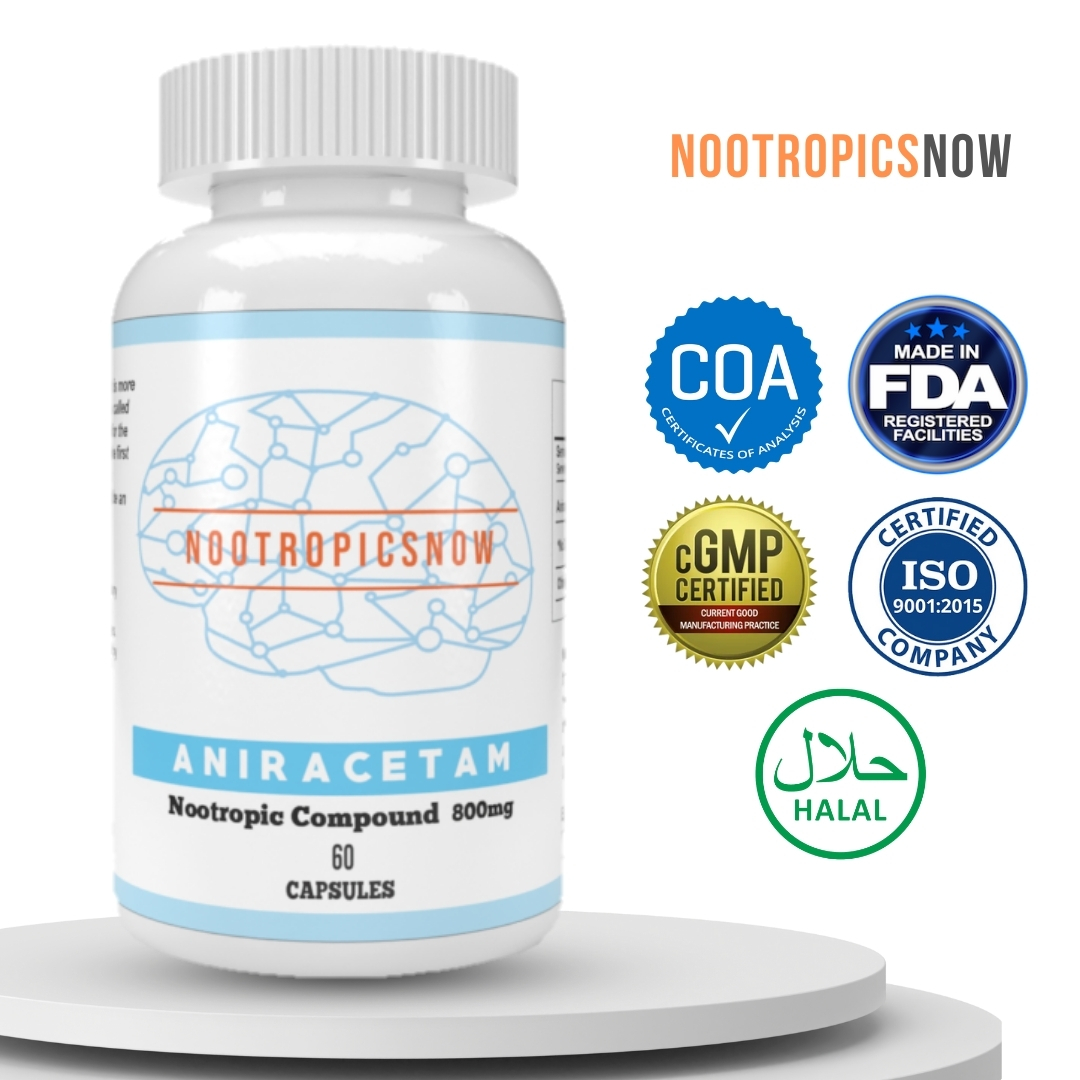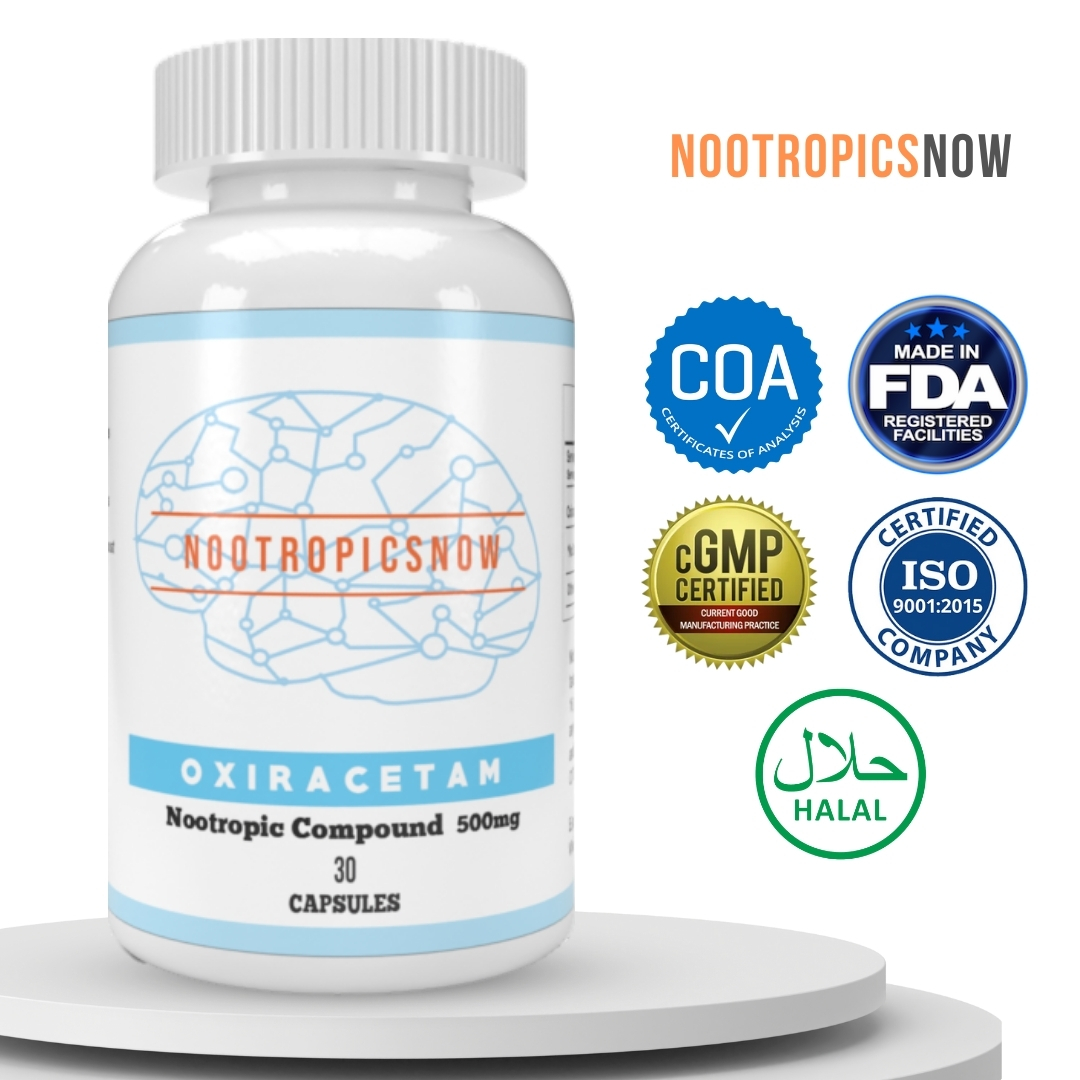Noopept Tolerance: How To Avoid It

Noopept Tolerance: A Comprehensive Guide to Maximizing Benefits and Minimizing Desensitization
Understanding Noopept and Its Cognitive Benefits
Noopept, or N-phenylacetyl-L-prolylglycine ethyl ester, is a synthetic nootropic. This popular cognitive enhancer is lauded for its potential to improve memory, learning capacity, focus, and overall cognitive function. Unlike some other nootropics, Noopept is a dipeptide, structurally similar to endogenous neuropeptides. Therefore, it is often associated with quicker and more pronounced effects.
The Science Behind Noopept’s Action
Noopept works through several mechanisms. These mechanisms impact neurotransmitter systems and promote brain health. Specifically, it is believed to increase the levels of Brain-Derived Neurotrophic Factor (BDNF) and Nerve Growth Factor (NGF). These are crucial proteins involved in neuroplasticity and neuron growth. Moreover, Noopept seems to modulate the activity of glutamate receptors. Glutamate is the primary excitatory neurotransmitter in the brain. By influencing glutamate, Noopept may enhance synaptic plasticity, aiding in memory consolidation and learning. It also affects acetylcholine levels, which is vital for cognitive processing. These multifaceted actions contribute to the cognitive benefits attributed to Noopept.
Reported Cognitive Enhancements with Noopept
Users often report several cognitive benefits from Noopept supplementation. These can include:
While Noopept is generally considered safe, individual responses can vary. Thus, awareness of potential side effects is crucial.
What is Tolerance and How Does It Relate to Nootropics?

Tolerance occurs when the body adapts to a substance over time. This reduces the substance’s effect. As the body encounters a drug or supplement, it seeks to maintain homeostasis. Therefore, it initiates compensatory mechanisms to counteract the substance’s effects. When referring to nootropics like Noopept, tolerance indicates a diminished cognitive enhancement even with continued use of the same dosage. Thus, the user experiences less benefit. This is a critical consideration for long-term nootropic use.
Mechanisms of Tolerance Development
Tolerance can develop through various mechanisms. These mechanisms often depend on the specific substance and how it interacts with the body. Some common mechanisms include:
The Significance of Understanding Tolerance
Understanding tolerance is essential for responsible nootropic use. It helps users manage their dosage schedules effectively. Moreover, it can allow users to take strategic breaks to prevent desensitization. Awareness of tolerance ensures the continued effectiveness of the chosen nootropic.
Can You Develop a Tolerance to Noopept? Evidence and Anecdotes
The question of whether tolerance develops to Noopept is a subject of ongoing discussion. It’s driven by a combination of scientific evidence and anecdotal experiences from users. While research on Noopept-specific tolerance is limited, insights can be gleaned from understanding its mechanisms and user reports.
Scientific Perspectives on Noopept and Tolerance
Because Noopept modulates neurotransmitter systems and promotes neuroplasticity, the theoretical possibility of tolerance exists. Overstimulation of receptors or changes in neurotransmitter levels could lead to compensatory adaptations, reducing its efficacy over time. However, studies have not consistently demonstrated a rapid or significant tolerance development with Noopept. Its effects on BDNF and NGF might promote long-term neuroplasticity. This could counteract the mechanisms that lead to tolerance.
Anecdotal Reports from Noopept Users
User experiences offer valuable perspectives. Many users report sustained benefits from Noopept with consistent use. However, some individuals note a diminished effect over time. These anecdotes suggest that individual variability plays a significant role. Some people may be more prone to developing tolerance than others. Factors such as dosage, frequency of use, individual physiology, and lifestyle could influence the development of tolerance.
Factors Influencing Tolerance Development
Several factors can influence the development of tolerance to Noopept:
Understanding these factors helps users make informed decisions about Noopept usage and manage potential tolerance.
Strategies to Prevent or Reverse Noopept Tolerance
If you suspect that you are developing tolerance to Noopept, several strategies can help prevent or reverse it. These strategies involve cycling, adjusting the dosage, combining with other nootropics, and optimizing lifestyle factors.
Cycling Noopept: On-Off Schedules
Cycling involves taking Noopept for a specific period, followed by a break. This allows the body to resensitize to the substance. Common cycling schedules include:
The appropriate cycling schedule depends on individual responses and preferences. It’s best to start with a conservative approach and adjust as needed.
Dosage Adjustment: Finding the Minimal Effective Dose
Instead of increasing the dosage to compensate for tolerance, consider lowering it. This helps find the minimal effective dose. This approach minimizes the risk of side effects and reduces the pressure on the body to adapt. Start with a low dose and gradually increase it until you achieve the desired cognitive effects. Once you find the minimal effective dose, stick to it.
Nootropic Stacking: Synergistic Combinations
Combining Noopept with other nootropics can enhance its effects and prevent tolerance. Synergistic combinations include:

View Product
Always research potential interactions and start with low doses of each substance to assess individual responses.
Lifestyle Optimization: Diet, Sleep, and Exercise
Lifestyle factors play a critical role in brain health and cognitive function. Optimizing these factors can enhance the effects of Noopept and reduce the risk of tolerance:
Addressing these lifestyle factors can significantly enhance overall cognitive function and reduce the risk of tolerance.
Potential Risks and Side Effects of Noopept
While Noopept is generally well-tolerated, it can cause side effects in some individuals. Awareness of these potential risks is essential for safe usage.
Common Side Effects
Common side effects include:
These side effects are usually mild and temporary. However, if they persist or become severe, discontinue use and consult with a healthcare professional.
Interactions with Medications and Other Substances
Noopept can interact with certain medications and substances. Inform your healthcare provider about all medications and supplements you are taking before starting Noopept. Potential interactions include:
Contraindications and Precautions
Noopept is contraindicated in certain individuals:
Always consult with a healthcare professional before using Noopept, especially if you have any underlying health conditions or are taking medications.
The Importance of Monitoring and Adjusting Your Nootropic Regimen
Monitoring your response to Noopept and adjusting your regimen is crucial for maximizing benefits and minimizing risks. Regular self-assessment helps identify any changes in cognitive function, side effects, or signs of tolerance.
Self-Assessment Techniques
Use the following techniques to self-assess your response to Noopept:
When to Adjust Your Regimen
Adjust your Noopept regimen if you experience any of the following:
Consulting with Healthcare Professionals
Consult with a healthcare professional, especially if you have any concerns about your health or are taking medications. They can provide personalized guidance and ensure safe and effective Noopept use.
Ethical Considerations in Nootropic Use
The use of nootropics raises ethical considerations related to fairness, cognitive enhancement, and potential societal implications. It’s important to approach nootropic use responsibly and ethically.
Fairness and Equal Access
Nootropics could create an uneven playing field. Some individuals might have an unfair advantage due to cognitive enhancement. Access to nootropics may not be equal, leading to disparities in cognitive abilities. Therefore, society should address these inequalities and promote fairness.
Cognitive Enhancement vs. Medical Treatment
It’s important to distinguish between cognitive enhancement and medical treatment. Nootropics should not be used to self-treat medical conditions without consulting a healthcare professional. Cognitive enhancement should be approached responsibly and ethically.
Societal Implications
Widespread nootropic use could have societal implications, such as increased pressure to enhance cognitive performance. This could lead to increased stress and anxiety. It is important to consider these potential societal effects and promote responsible nootropic use.
Conclusion: Maximizing Noopept Benefits and Minimizing Tolerance
Noopept offers promising cognitive benefits. However, users must understand tolerance, risks, and ethical considerations. Strategies such as cycling, dosage adjustment, stacking, and lifestyle optimization can prevent tolerance and maximize benefits. Responsible and informed use can enhance cognitive function safely and ethically.
Noopept Tolerance: Understanding the Concept and Mitigation Strategies
Tolerance is a physiological adaptation where the body becomes less responsive to a substance after prolonged exposure. As a result, higher doses are often required to achieve the same initial effect. In the realm of nootropics, tolerance is a key consideration for users seeking long-term cognitive enhancement. While Noopept is generally considered well-tolerated, understanding how tolerance might develop and how to mitigate it is vital for safe and effective use.
Understanding Tolerance: A Deeper Dive
Tolerance develops through several mechanisms. These include receptor downregulation, where the number of receptors available to bind to a substance decreases; enzyme induction, where the body increases the production of enzymes that break down the substance; and changes in neurotransmitter synthesis and release[1]. Understanding these mechanisms helps in formulating strategies to prevent or reverse tolerance.
Receptor Downregulation: With continuous stimulation, cells can reduce the number of receptors available on their surface. This means even if the same amount of Noopept is taken, there are fewer receptors to bind to, diminishing the effect.
Enzyme Induction: The body increases the production of enzymes to metabolize Noopept more efficiently. This leads to a quicker breakdown and elimination of the substance, shortening its duration of action and requiring higher doses for the same effect.
Neurotransmitter Changes: Prolonged stimulation can deplete neurotransmitter stores or alter their release patterns. This makes the neurons less responsive, reducing the overall impact of Noopept on cognitive function.
Therefore, individuals need to consider how these biological processes can impact the efficacy of nootropics over time. Awareness and strategic planning are essential for long-term usage.
Does Noopept Induce Tolerance?
The question of whether Noopept induces tolerance is complex. While some users report experiencing a decrease in effects over time, others maintain its benefits with long-term use. Anecdotal evidence suggests that tolerance development with Noopept is less pronounced compared to some other nootropics and stimulants. However, individual responses vary considerably, and careful monitoring is necessary[2].
User Reports: Many users report experiencing noticeable cognitive benefits when they initially start taking Noopept. They describe enhanced memory, improved focus, and heightened mental clarity. However, over time, some of these initial effects may diminish.
Scientific Evidence: Limited scientific studies specifically address the development of tolerance to Noopept. Most studies focus on its cognitive-enhancing effects and safety profile. This lack of direct evidence makes it difficult to definitively conclude whether tolerance develops and at what rate.
Individual Variability: Individuals respond differently to Noopept. Factors such as genetics, lifestyle, diet, and overall health can influence how the body adapts to the substance. This makes it challenging to predict whether a specific individual will develop tolerance.
Ultimately, the development of tolerance to Noopept remains a complex and nuanced issue. While it may not be as rapid or severe as with some other substances, users should remain vigilant and monitor their responses closely. This proactive approach can help maximize the benefits of Noopept while minimizing the risk of diminished effectiveness.
Strategies for Mitigating Noopept Tolerance
Several strategies can help mitigate the development of tolerance to Noopept and maintain its cognitive benefits over time. These include cycling, dosage adjustments, combining with other nootropics, and lifestyle modifications. Implementing these strategies strategically can help optimize the long-term effectiveness of Noopept[3].
1. Cycling Noopept
Cycling involves taking Noopept for a specific period, followed by a break. This allows the body to reset its receptors and neurotransmitter levels, potentially restoring sensitivity to the substance. Common cycling schedules include “2 weeks on, 1 week off” or “4 weeks on, 2 weeks off.”
Benefits of Cycling: Cycling prevents receptor downregulation, reduces enzyme induction, and restores neurotransmitter sensitivity. It allows the brain to return to its baseline state, making Noopept more effective upon reintroduction.
Cycling Protocols:
Example: A user takes 10mg of Noopept twice daily for four weeks. They then stop taking Noopept for two weeks. After the break, they resume the same dosage, monitoring their response to ensure it remains effective.
2. Dosage Adjustments
Avoid escalating the dosage as tolerance develops. Instead, consider temporarily reducing the dosage or taking a break. Higher doses can exacerbate tolerance and increase the risk of side effects.
Why Avoid Escalation: Increasing the dosage can lead to further receptor downregulation and enzyme induction, accelerating tolerance. It can also increase the likelihood of experiencing adverse effects.
Strategies for Dosage Adjustment:
Example: A user who initially responded well to 10mg of Noopept twice daily notices a diminished effect. Instead of increasing the dosage, they reduce it to 5mg twice daily for a week. After the week, they reassess their response and either continue with the reduced dosage or take a complete break.
3. Combining with Other Nootropics
Combining Noopept with other nootropics that have different mechanisms of action can help maintain its effectiveness. This approach allows users to target multiple cognitive pathways simultaneously, reducing reliance on a single substance.
Synergistic Effects: Combining nootropics can create synergistic effects, where the combined benefits are greater than the sum of their individual effects. This can help enhance cognitive function while minimizing the risk of tolerance.
Nootropic Combinations:

View Product
Example: A user combines 10mg of Noopept twice daily with 300mg of Alpha-GPC. The Alpha-GPC supports acetylcholine production, enhancing Noopept’s memory-enhancing effects. The user monitors their response and adjusts the dosage as needed.
4. Lifestyle Modifications
Lifestyle factors significantly influence cognitive function and can impact the effectiveness of nootropics. Making positive lifestyle changes can enhance the benefits of Noopept and reduce the likelihood of tolerance development.
Key Lifestyle Changes:
Example: A user taking Noopept incorporates regular exercise, a balanced diet, and stress-reduction techniques into their daily routine. These lifestyle changes enhance Noopept’s cognitive benefits and reduce the risk of tolerance.
5. Receptor Sensitization Strategies
Certain strategies can help resensitize receptors, making them more responsive to Noopept. These include using receptor agonists or antagonists and incorporating supplements that support receptor health.
Receptor Agonists and Antagonists:
Supplements for Receptor Health:
Example: A user incorporates magnesium L-Threonate into their daily regimen to support receptor function. They also experiment with using a receptor antagonist for a brief period to allow receptors to reset.
Monitoring Your Response
Closely monitoring your response to Noopept is crucial for identifying tolerance early and adjusting your strategy accordingly. Keep a detailed log of your experiences, including dosage, cognitive effects, and any side effects.
Key Metrics to Track:
Example: A user keeps a daily log of their experiences with Noopept, noting their cognitive performance, mood, sleep quality, and any side effects. This detailed record helps them identify when tolerance begins to develop and adjust their strategy accordingly.
Potential Side Effects and Safety Considerations
Noopept is generally considered safe and well-tolerated when taken at recommended dosages. However, some users may experience side effects. It is essential to be aware of these potential side effects and take appropriate precautions.
Common Side Effects:
Safety Precautions:
Example: A user experiences headaches when starting Noopept. They reduce the dosage and increase their water intake, which helps alleviate the headaches. They also consult with their doctor to ensure Noopept is safe for them to use.
Conclusion: Maximizing the Benefits of Noopept
Noopept is a promising nootropic that offers significant cognitive benefits. By understanding the concept of tolerance and implementing strategies such as cycling, dosage adjustments, combining with other nootropics, and lifestyle modifications, users can maximize its effectiveness while minimizing the risk of diminished effects. Always consult with a healthcare professional before starting any new supplement regimen to ensure it is safe and appropriate for your individual needs. With careful planning and monitoring, Noopept can be a valuable tool for enhancing cognitive function and supporting long-term brain health.













